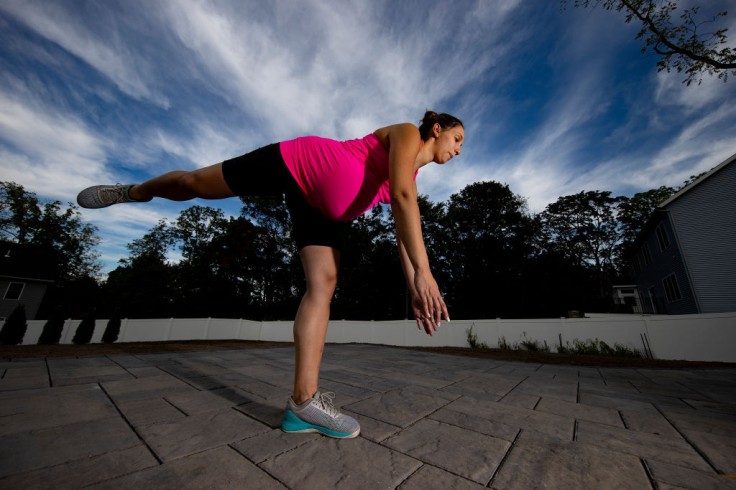
Maintaining an active and balanced lifestyle is positive news and a key priority for the next nine months, whether you wish to continue an existing exercise routine or embark on a new one.
From cardio and strength training to stretching and core exercises, here's a comprehensive guide to staying fit throughout pregnancy.
Benefits of Exercising During Pregnancy
Before, you might think exercise was only associated with fitting into smaller clothes, but now is the time to shift your perspective because of pregnancy.
During pregnancy, engaging in physical activity can reduce the likelihood of preterm birth, cesarean birth, excessive weight gain, gestational diabetes, hypertensive disorders, and lower birth weight, according to the American College of Obstetricians and Gynecologists (ACOG).
Also, it is an effective way to maintain physical fitness, alleviate low back pain, manage symptoms of depression and anxiety, reduce stress, and improve postpartum recovery.
Brooke Cates, a prenatal and postpartum fitness expert, recommends incorporating some exercises in each trimester to support the body through its changes and facilitate an easier return to exercise postpartum.
Giving emphasis on core and pelvic floor awareness will help establish a deeper connection before substantial changes occur.
Safe Workouts Throughout Pregnancy
Cates suggests that while most exercises can continue throughout each trimester, modifications and scaling back may be necessary to enhance strength, stability, and adaptability.
General safety tips recommended by ACOG include obtaining clearance from your doctor if you are new to exercise or have health conditions that may contraindicate it, staying hydrated, wearing supportive clothing, avoiding overheating, refraining from lying flat on your back for extended periods during the third trimester, and avoiding contact sports and hot yoga.
Cardio for All Three Trimesters
Choices like walking, swimming, jogging, and stationary cycling are cardiovascular exercises suitable for all three trimesters. Unless your doctor advises otherwise, following the U.S. Department of Health and Human Services Physical Activity Guidelines is recommended. Vigorous-intensity exercises like running can be continued with medical clearance.
Exercises for the First Trimester
In the first three months, a pregnant woman can continue a regular exercise routine if she is not considered a high-risk pregnancy.
A good foundation of a well-rounded prenatal fitness routine includes 150 minutes of cardiovascular activity weekly and 2 to 3 days of strength training focusing on major muscle groups suggested by physical therapist Heather Jeffcoat.
Some specific exercises are recommended, such as pelvic curls, pelvic braces, kneeling push-ups, squats, and bicep curls. Lunges with weight, glute bridges, and standard push-ups are also suitable.
Exercises for the Second Trimester
Caution is needed in the second trimester with the uterus expanding. Avoid some high-impact exercises involving jumping, running, or prolonged periods lying on your back.
Variations of squats, incline pushups, hip flexor and quadriceps stretches, side-lying leg lifts, and mermaid stretches are recommended to address postural changes and enhance stability and strength.
Exercises for the Third Trimester
In the third trimester, focus on low-impact activities like walking, swimming, prenatal yoga, Pilates, pelvic floor exercises, and bodyweight moves to keep both upper and lower body muscles strong. It's necessary to avoid exercises with a risk of falls due to changes in your center of gravity.
Specific diastasis recti correction exercises, along with low-weight or bodyweight-only strength training exercises like bodyweight squats, standing shoulder press, bicep curls, pushups against a wall, and modified planks, are suggested.
Maintaining physical activity is beneficial for both mother and baby during pregnancy. Regular exercise puts up a strong core, fit muscles, a healthy cardiovascular system, and improved mental well-being.
Listen always to your body, stop exercising if discomfort happens, and consult your doctor with any concerns about your exercise program and its impact on your body.